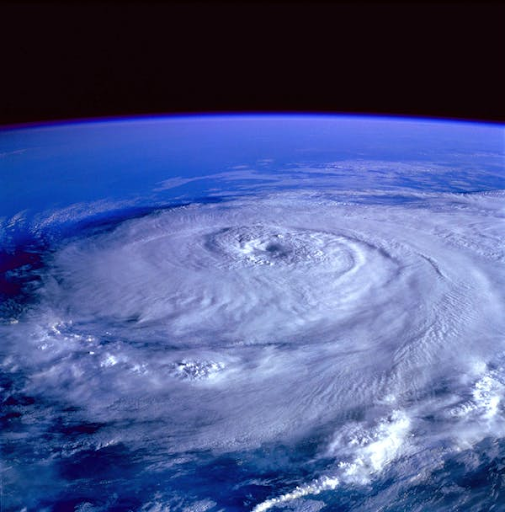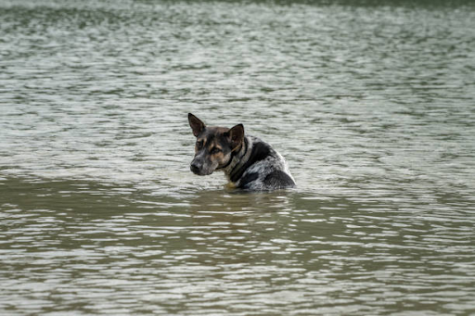Hurricane Ian and its Effects on Florida Communities and Wildlife

Photo Source: Pexels.com
November 4, 2022
Most Americans know of Hurricane Katrina or have learned about it in elementary school, as it was one of the deadliest storms ever recorded with thousands of fatalities and billions of dollars worth of damage. Hurricane Ian, the category 5 storm that hit Florida’s West Coast on September 27th, is considered one of the most powerful storms in the United States along with Katrina; Thousands of people were left with little to nothing remaining of their past lives. With winds up to 150mph, extremely heavy rain, and intense flooding, this storm devastated many communities in Florida and created widespread damage before making its way north, ready to dismantle more of America’s beloved coast.
Would you be able to combat this storm in the dark?
Ian began near the Cayman Islands and made landfall in Cuba before striking South Florida. Extreme flooding trapped people inside their homes with water rising and no way to escape. This hurricane caused Cuba’s electric grid to collapse, which left most of the country to face catastrophic flooding and extreme winds in the dark. Like in Cuba, Hurricane Ian left approximately 2.7 million people in Florida without electricity for days. Those who chose to stay in their homes had to live off of food and supplies that they had stored before since hundreds of stores and businesses had closed. In addition, citizens who were struggling with money may not have had separate flood insurance so it can be extremely difficult to recover financially after a disaster like Ian.
How many lives has Hurricane Ian already claimed?
With the death toll at 119, Hurricane Ian hit Florida with no mercy. Nearly a quarter of the people who had died during the hurricane were in their 70s and about 26% were over 80 years old. Many people think that drowning was the only cause of death during the hurricane, but it was not just the direct impact of the storm that affected the death toll. A handful of the deaths were caused by the inability to make it to medical appointments and hospitals for life-saving procedures. If someone were to have a crisis like a stroke or a heart attack in the midst of the hurricane it can be extremely dangerous or even fatal because of the lack of medical care. This sparked fear among those who had older family members.
Destruction on Pine Island
Hurricanes can be extremely traumatizing and life-altering for people who aren’t prepared for the worst, such as those on Florida’s Pine Island. An island just off of Florida’s Gulf coast, Pine Island, has only one bridge that connects it to the mainland. During the storm, this bridge was destroyed, which meant that Pine Island was only able to be reached by boat or helicopter, which left people stranded and unable to receive help from the outside. “Pine Island had been known for its quiet, small-town atmosphere and mangrove trees. It’s a popular destination for fishing, kayaking, and canoeing. Now, bleak scenes of destruction are everywhere in this shattered paradise.” This beloved island, which was known for various summer activities, affected people who lived there and also those who would travel to the island. Pine Island had the highest amount of fatalities because of how terrible the flooding was.
Imagine sitting in your home, watching everything you own float through the house like debris in a river. What would you do if the place you used to recognize was transformed into a wasteland? This is what many had to face during Hurricane Ian.
How did the storm impact animals?
Not only did Ian rip through cities and ravage homes, but the hurricane also did detrimental damage to the environment and wildlife. Hurricane Ian uprooted thousands of trees and left various species without homes. In addition, these animals struggled with habitat change and loss of food sources. Hundreds of volunteers and organizations gave their time to help relocate and treat lost pets who had been displaced or injured during Ian. In addition, the MSPCA in Massachusetts had rescued around 100 cats and several dogs. The purpose of this was to make space in Florida shelters for animals who were in need the most. A majority of these animals were adopted already but many are still waiting. Many farm owners decided it would be best to leave their livestock outside to reduce the risk of drowning inside a barn or a stable. This resulted in some of the animals wading in waist-deep water until they were able to be rescued and brought back to safety. As the water receded during the storm in Tampa Bay, food sources like fish and other marine species were exposed and eaten by birds and small mammals who were struggling to survive. At the time, this benefitted these species, but it may be difficult for these animals to locate food after the water returns. Hurricanes not only impact humans, but they cause extreme hardship for animals who were not expecting Ian.

Portrayal on Social Media
Most Americans receive their news and information from social media, news apps, or websites. Hurricane Ian was heavily highlighted all over social media apps, especially TikTok. People who stayed at home recorded videos, took pictures and shared what their experience was like in the midst of the storm. Videos with the hashtag #hurricaneian have millions of views and have shown irregular animals in streets, people floating in their living rooms, and that’s not all. Although several of these videos were meant to be funny, they played an important part in spreading information about the storm. These videos gave people who live further away a deeper look into the eye of the storm and allowed them to almost experience what it was like for those who were there. Some of these videos and pictures have assisted rescuers in locating missing people, and have helped family members connect with their loved ones during such a tragic time.
When catastrophic storms like Ian takes place, we are reminded that it requires effort from the whole community to recover. Hundreds of organizations took time to assist communities and make their recovery easier. One of the biggest organizations, The Red Cross, delivered food, goods, cleaning supplies, and more to those who were impacted by the disaster, although, there were many more that helped the effort significantly. While Florida and other regions are still not 100% back to normal, these efforts have remarkably assisted homeowners and victims all over the state.

Ben Whitlock • Nov 5, 2022 at 3:09 pm
The last time I remember actually being affected directly by a hurricane was years ago when I was young, when Hurricane Irene caused a tree to fall onto my garage. Although my experience with destructive nature is nowhere near that of someone affected by Ian, I can only imagine how completely life changing and devastating it can really be. I’m glad this article touched on animals, as in media, usually it’s only the human part that gets examined and covered.
Jack Fahey • Nov 5, 2022 at 8:47 am
Being from New England, it’s hard to imagine how impactful these storms can be. My dad was in Louisiana for the Katrina clean up effort, and his stories bring home the damage that hurricanes can cause. It’s interesting that platforms like TikTok can connect us to the lives of those living through Ian and other storms like it. Social media has ups and downs, but it definitely is a powerful tool to help empathize with those far away.